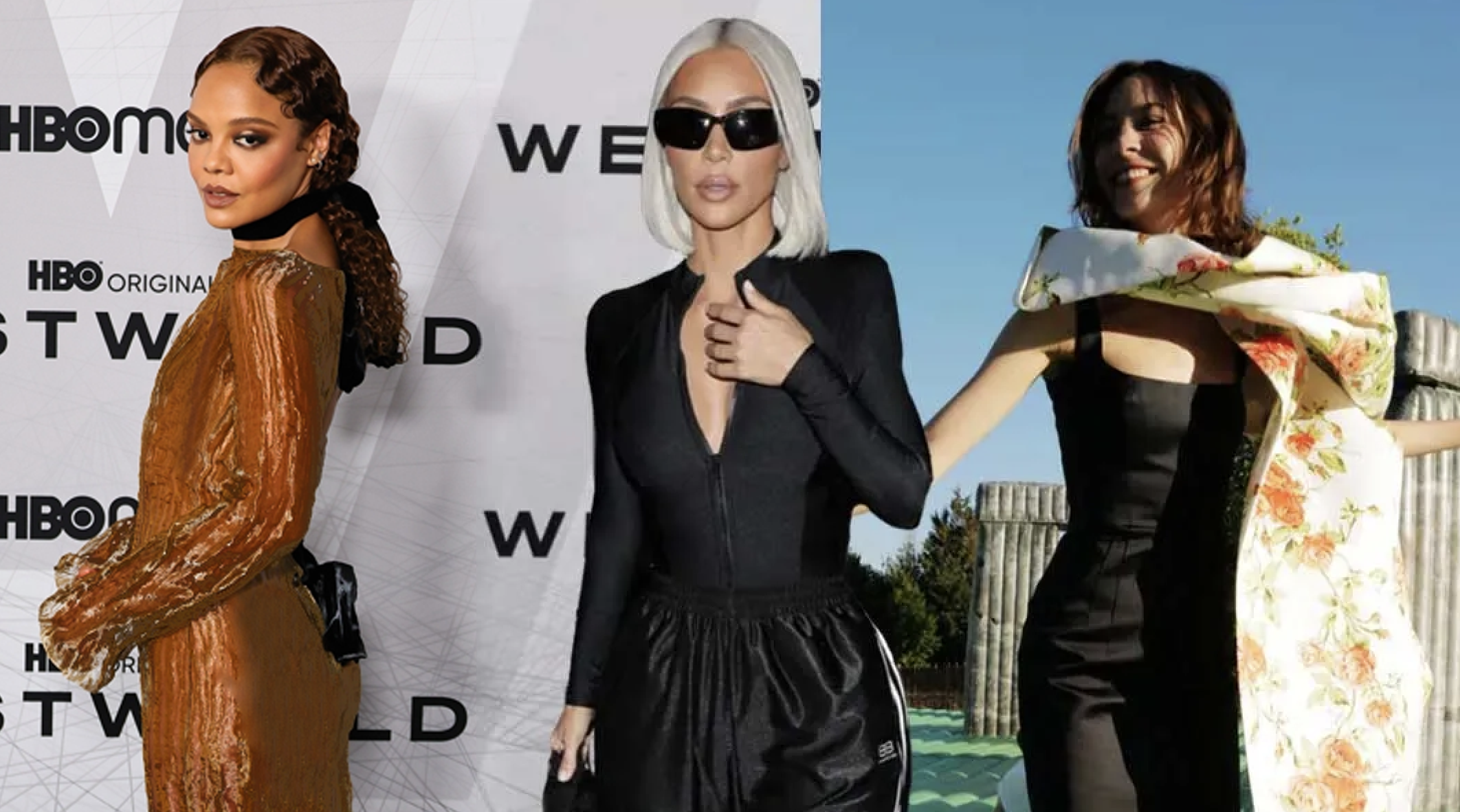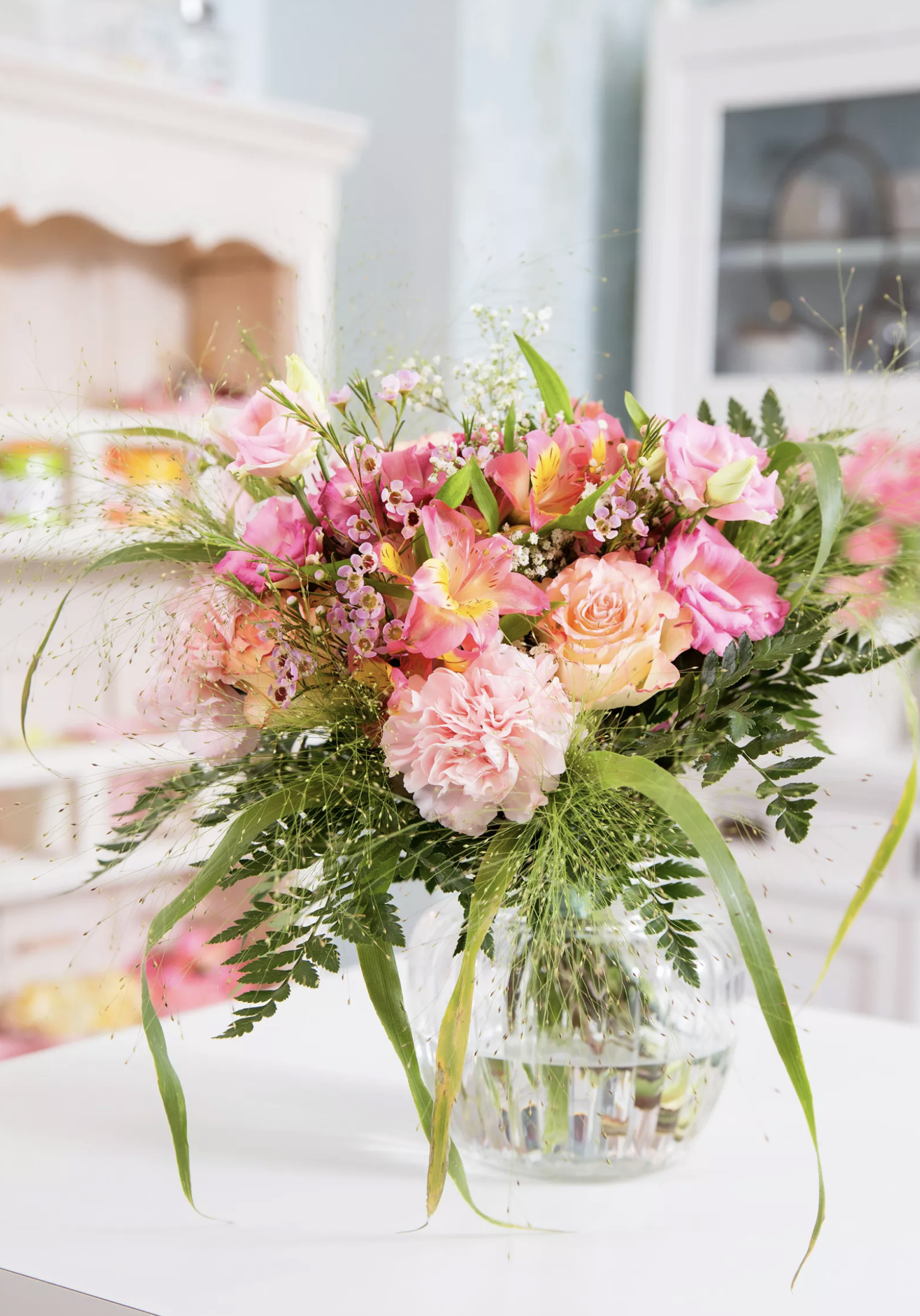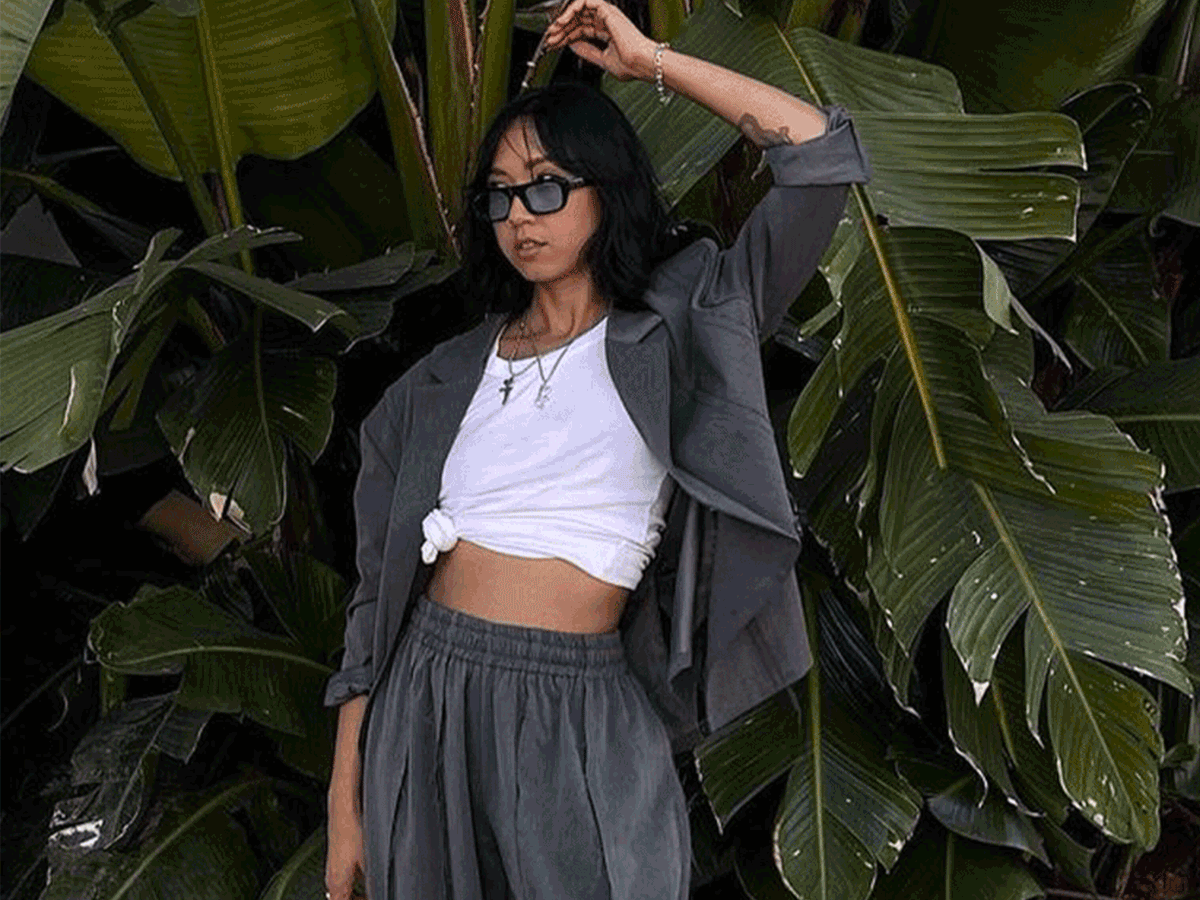For some, the summer of 2022 represented a passport to freedom. “Goodbye trousers, hello nose ring!” seems to have been Katie Holmes’s thought process. Others have made it their mission to raise up brands that stand for something (Telfar’s stocks are up thanks to Beyoncé, whose Birkins are in storage), or rewear past looks as part of a shift towards a greener industry outlook (Alessandra Rich polka dots are officially the Duchess of Cambridge’s uniform).
When the stars have finally moored their mega-yachts in Saint-Tropez, and the Love Island couples have split up, this will be remembered as the season of Jennifer Lopez’s grand tour – sorry, honeymoon. All beaming smiles and Birkins, J Lo has been on a hyper-glamorous charm offensive, packing more designer handbags and Hustlers-esque platforms than any pop star performing across the globe (look away, Dua and Harry!).
From Hollywood heavyweight Lopez to Brad Pitt, who firmly threw his hat in the ring for the title of this season’s most stylish with the help of some great linen, here’s Vogue’s special commendations for those dedicated dressers who turn up and turn out major looks, even when everyone else has mentally put their #OOO on.
The Stealth Glasto Goer
Tracee Ellis Ross is one of Instagram’s most dedicated fashion chroniclers, but her stint at Glastonbury almost slipped under the radar. Post-festival, she shared a video montage of her negotiating Worthy Farm’s fields wearing a double backpack (Prada on the front, Gucci behind), and a Diana Ross band tee. “I don’t understand why anyone would choose this,” said the bemused Black-ish actor. “But, I will do it for my family.” While her mother aced the Legends slot, Tracee stole our hearts as a first-time festival legend in her own right.
The London Look
Every once in a while Kylie Jenner flexes her fashion muscle and stakes her claim as the most trend-conscious Kardashian sister. Usually this happens at Amangiri, but, this summer, Kylie swapped Canyon Point for Claridge’s, as she showed London what her archive is made of. From rare Comme to ’90s motocross Mugler, she levelled up tourist style with a string of customised vintage and status Hermès bags. No one beats a Kardashian-Jenner when it comes to image curation.
The Saint-Tropez Slip Dress Queen
Headlines from the Beckhams’ annual yacht extravaganza around Europe incorporated vodka, karaoke and Gigi Hadid, but not enough was said about Victoria’s chic holiday wardrobe. The designer ticked all the timeless summer dress boxes, from slips to LBDs, and elevated them with gold jewellery (the best to accentuate a tan), and the odd Bottega. The family’s boat might have been called The Madsummer, but VB looked nothing but classic at sea.
The World’s Most Dedicated Honeymooner
No matter about Ben’s bemused frown and never-ending roster of blue shirts, his new wife, Mrs Affleck, had the media gripped with every affordable Reformation dress and fairytale Gucci gown worn in Paris and Capri. “No one does what she does. Or how she does it,” said her stylists Rob Zangardi and Mariel Haenn. Her suitcase was curated with the same precision as a red-carpet tour – nobody honeymoons like Jennifer Lopez.
The Best-Dressed Wedding Guest
Alexa Chung will always be the most stylish guest at any given nuptials, but this summer, she’s had a particularly good run of shocking purple, black velvet and floral brocade embellished dresses. Even better than her accessories (Carrie Bradshaw would surely weep at those heavenly blue Manolos)? The pictures that prove she’s the life and soul of a reception, too.
The Bermuda Shorts Champion
Since stepping down as a senior member of The Firm in January 2020, we’ve seen the Duchess of Sussex in three modes: Santa Barbara mom, Hollywood businesswoman, and exiled royal on a mission to tell her side of the story. Then came the Bermuda shorts. This summer’s uniform of chic tailoring, worn to lunch with Gloria Steinem and at the Santa Barbara polo, have signified a woman at ease and in charge of her narrative. Those can-do cut-offs spoke volumes.
The Sci-Fi Style Plate
Tessa Thompson has had some stop-you-in-your-tracks good fashion moments this summer. By day, she’s in surrealist Schiaparelli and conceptual MM6 Maison Margiela. Come nighttime, she’s all liquid silver deconstructed Armani Privé gowns, other-worldly Interior NYC dresses and artsy Puppets & Puppets pieces that make her walk a little taller. Hers are happy-making clothes and, to quote one Vogue staffer: “They’re restoring my faith in fashion.”
The Skirt Flirt
Cantaloupe-orange suiting and chocolate-brown linen skirts became Brad Pitt’s USP on the Bullet Train tour, and his breezy red-carpet attire received more than a few nods of approval from industry insiders. The actor’s involvement with luxury shirt brand God’s True Cashmere is clearly paying dividends, and with a penchant for The Elder Statesman and Rick Owens, his style is leaning away from LA Dad to Cali creative with a point of difference.
The World’s Coolest Mum
Rihanna changed the maternity wear game this year and, naturally, she’s proved she’s the most fashion-forward mother since giving birth to her son. The Fenty mogul was first out the gate with Balenciaga’s instantly cult collab with Adidas, and has been fuelling a healthy Martine Rose habit. No one does sports chic quite like Rih. Stat.
The (Balenciaga) Chameleon
Who runs the world? Kim! It’s been Kardashian’s summer, thanks to her Balenciaga switch up from skin-tight pantaboots to baggy track pants (big news for a ’chiaga girl), and a hair transformation that posed the question: do bobs have more fun? While the world was captivated by her whirlwind romance with Pete Davidson, we’re more excited to see what the next fashion chapter holds for boss bitch Kim.
The Tailoring Mood-Setter
Sunnies on, suits pressed has been the mood of Daniel Kaluuya’s Nope press tour wardrobe. It’s been a total joy to watch the actor power stance his way through red-carpet appearances in Dior by Kim Jones and Armani, before taking on junkets in Martine Rose. His partnership with the stylist Jason Rembert is a great example of when fashion collaborations just work.














































































